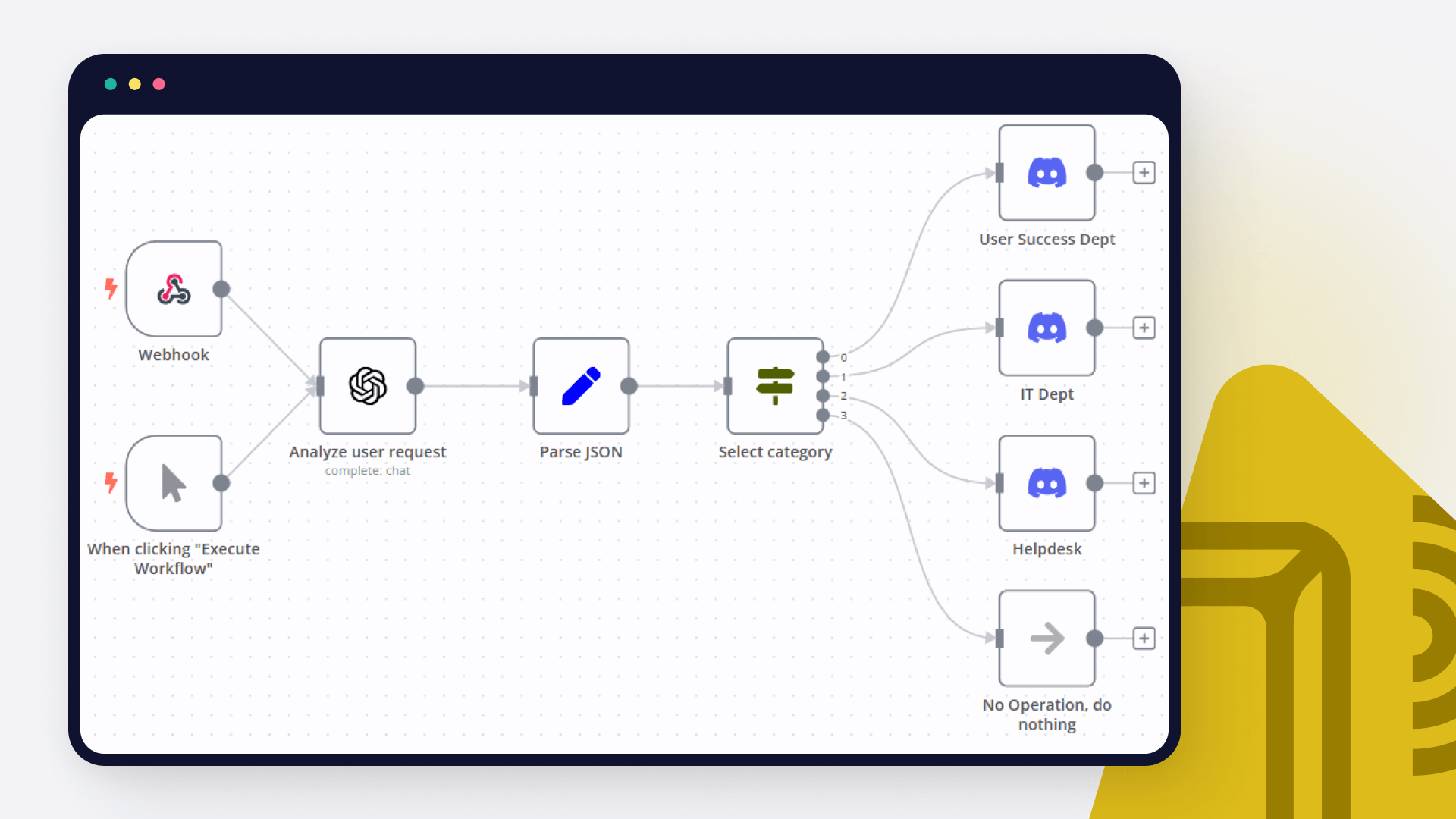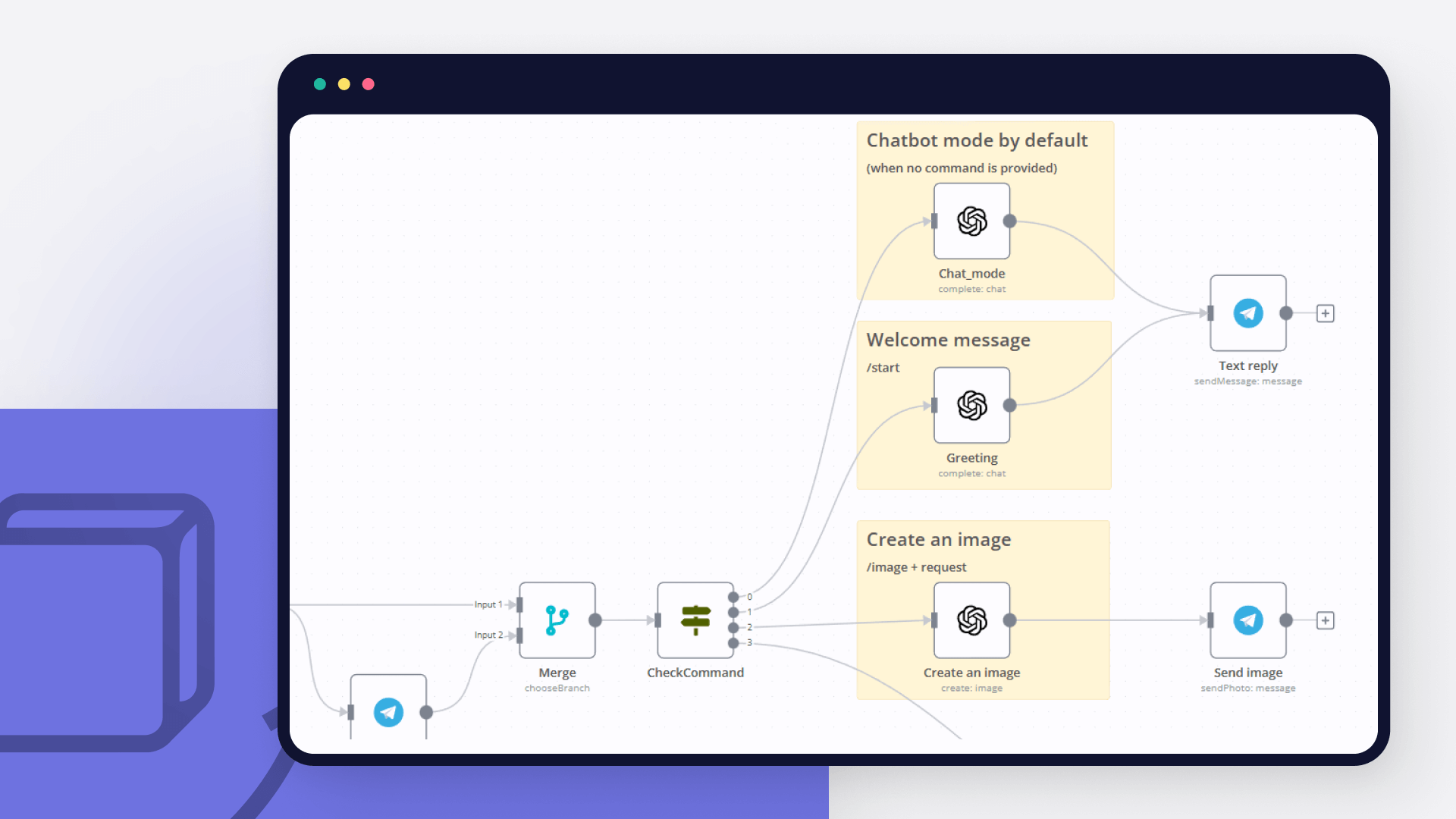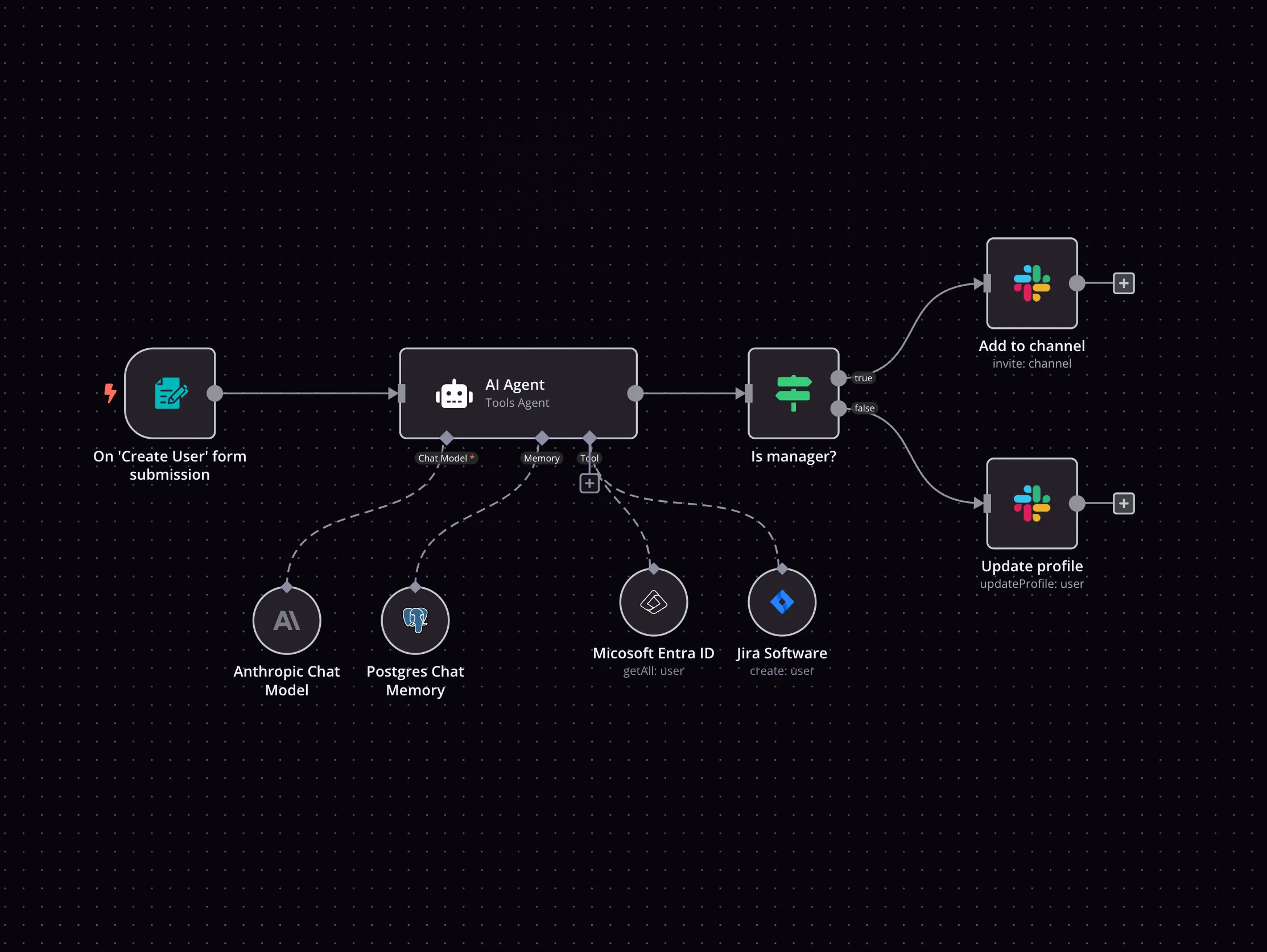Flotiq and OpenAI integration
Save yourself the work of writing custom integrations for Flotiq and OpenAI and use n8n instead. Build adaptable and scalable Development, workflows that work with your technology stack. All within a building experience you will love.

How to connect Flotiq and OpenAI
Create a new workflow and add the first step
In n8n, click the "Add workflow" button in the Workflows tab to create a new workflow. Add the starting point – a trigger on when your workflow should run: an app event, a schedule, a webhook call, another workflow, an AI chat, or a manual trigger. Sometimes, the HTTP Request node might already serve as your starting point.
Build your own Flotiq and OpenAI integration
Create custom Flotiq and OpenAI workflows by choosing triggers and actions. Nodes come with global operations and settings, as well as app-specific parameters that can be configured. You can also use the HTTP Request node to query data from any app or service with a REST API.
Supported API Endpoints for Flotiq
List content types
Retrieves a list of all content types available.
Create content type
Creates a new content type.
Update content type
Updates an existing content type.
Get single content type
Retrieves details of a specific content type.
Delete content type
Deletes a specific content type.
Create content type
Create a new content type definition.
Get content type
Retrieve a specific content type definition.
Update content type
Update an existing content type definition.
Delete content type
Delete an existing content type definition.
Create content type
Creates a new content type for the application.
Update content type
Updates an existing content type in the application.
List content types
Retrieves a list of all content types available in the application.
Get single content type
Retrieves a specific content type by its ID.
Delete content type
Deletes a specified content type from the application.
Create content type
Creates a new content type definition via API.
Update content type
Updates an existing content type definition.
List content types
Retrieves a list of content type definitions.
Get single content type
Retrieves a single content type definition by ID.
Delete content type
Deletes a specific content type definition by ID.
List content objects
Retrieves a list of all content objects.
Create content object
Creates a new content object.
Update content object
Updates an existing content object.
Get single content object
Retrieves details of a specific content object.
Delete content objects
Deletes a specific content object.
Create content object
Creates a new content object in the application.
Update content object
Updates an existing content object in the application.
List content objects
Retrieves a list of all content objects available in the application.
Get single content object
Retrieves a specific content object by its ID.
Delete content object
Deletes a specified content object from the application.
List deleted content objects
Retrieves a list of all deleted content objects.
Create content object
Creates a new content object based on a content type.
Update content object
Updates an existing content object.
List content objects
Retrieves a list of content objects.
Get single content object
Retrieves a single content object by ID.
Delete content object
Deletes a specific content object by ID.
Retrieve content object
Retrieve the schema of a specific Content Object by sending a GET request.
Delete content object
Delete a specific Content Object identified by its ID.
Retrieve GraphQL schema
Retrieve the GraphQL schema that describes your data.
Execute GraphQL queries
Execute GraphQL queries to retrieve specific data.
Get blogposts
Retrieve details of blogposts content type.
Create content type
Create a new Content Type Definition in the system.
Update content type
Updates the definition of the specified content type using a PUT request.
Update blogposts
Updates the schema definition for blog posts.
To set up Flotiq integration, add the HTTP Request node to your workflow canvas and authenticate it using a generic authentication method. The HTTP Request node makes custom API calls to Flotiq to query the data you need using the API endpoint URLs you provide.
See the example hereThese API endpoints were generated using n8n
n8n AI workflow transforms web scraping into an intelligent, AI-powered knowledge extraction system that uses vector embeddings to semantically analyze, chunk, store, and retrieve the most relevant API documentation from web pages. Remember to check the Flotiq official documentation to get a full list of all API endpoints and verify the scraped ones!
OpenAI supported actions
Message a Model
Generate a model response with GPT 3, 4, 5, etc. using Responses API
Classify Text for Violations
Check whether content complies with usage policies
Analyze Image
Take in images and answer questions about them
Generate an Image
Creates an image from a text prompt
Edit Image
Edit an image
Generate Audio
Creates audio from a text prompt
Transcribe a Recording
Transcribes audio into text
Translate a Recording
Translates audio into text in English
Delete a File
Delete a file from the server
List Files
Returns a list of files that belong to the user's organization
Upload a File
Upload a file that can be used across various endpoints
Create
Create a conversation
Get
Get a conversation
Remove
Remove a conversation
Update
Update a conversation
Generate
Creates a video from a text prompt
Flotiq and OpenAI integration details
OpenAI
OpenAI, the creator of ChatGPT, offers a range of powerful models including GPT-3, DALL·E, and Whisper. Leverage these models to build AI-powered workflows.
Related categories
Flotiq and OpenAI integration tutorials

How to create a ChatGPT Discord bot
In this tutorial, we dive deep into how to create an AI bot for analyzing user requests and automating notifications in different Discord channels. Read on!

How to create an AI bot in Telegram
Learn how to create an AI chatbot for Telegram with our easy-to-follow guide. Ideal for users who are interested in exploring the realm of bot development without coding.

How to use OpenAI node with n8n to automate your workflows
Learn how to use OpenAI node together with n8n to automate your workflows – discover these 6 existing automation ideas!

How to get started with ChatGPT in your n8n projects: 5 simple workflows
Learn how to connect n8n with ChatGPT and effectively use this chatbot. Prompt engineering and prompt chaining is the trick!

How to create an AI-driven tweet generator bot in 10 minutes
Lacking time or inspiration for your tweets? Then leverage OpenAI and n8n to generate tweets for you and store them in Airtable for further review.
FAQ
Can Flotiq connect with OpenAI?
Can I use Flotiq’s API with n8n?
Can I use OpenAI’s API with n8n?
Is n8n secure for integrating Flotiq and OpenAI?
How to get started with Flotiq and OpenAI integration in n8n.io?
Need help setting up your Flotiq and OpenAI integration?
Discover our latest community's recommendations and join the discussions about Flotiq and OpenAI integration.

How to define AI-powered Extra Workflow Inputs in AI tools?
Artem
Describe the question I need to pass to the tool some data from the AI Agent. Like, “task name” and “task tags” to create a task via Custom Workflow Tool. So I don’t know what to refer to in the Extra Inputs. Because th…
Open topic

The prompt is not being executed
sérgio eduardo floresta filho
Hello! My goal is to use Google Forms to collect information from my clients and then use n8n to automate the processing of this information. My workflow involves: Collecting data through Google Forms. Using n8n to re…
Open topic

OpenAI not receicving JSON data from previous node
Andrew adawdad
Describe the problem/error/question Im currently using the openAI node to send a text message to the system. I am sending the previous nodes JSON data, but the openai response says that im only sending {{ $json }} instea…
Open topic

Help with google sheets read node
PinkFloyd
Hi all, I am struggling with one part of my personal finance workflow where I want n8n to read a large table from Google Sheets and then feed all of it to an OpenAI node. I already set it up but can’t figure out how to f…
Open topic

New openAi Web search
Steve Warburton
Is this available to n8n ? As far as I can see it’s just ( for now ) ChatGPT
Open topic
Looking to integrate Flotiq and OpenAI in your company?
The world's most popular workflow automation platform for technical teams including
Why use n8n to integrate Flotiq with OpenAI
Build complex workflows, really fast


